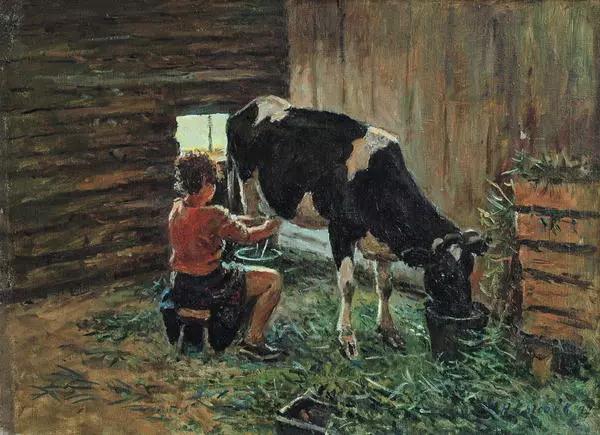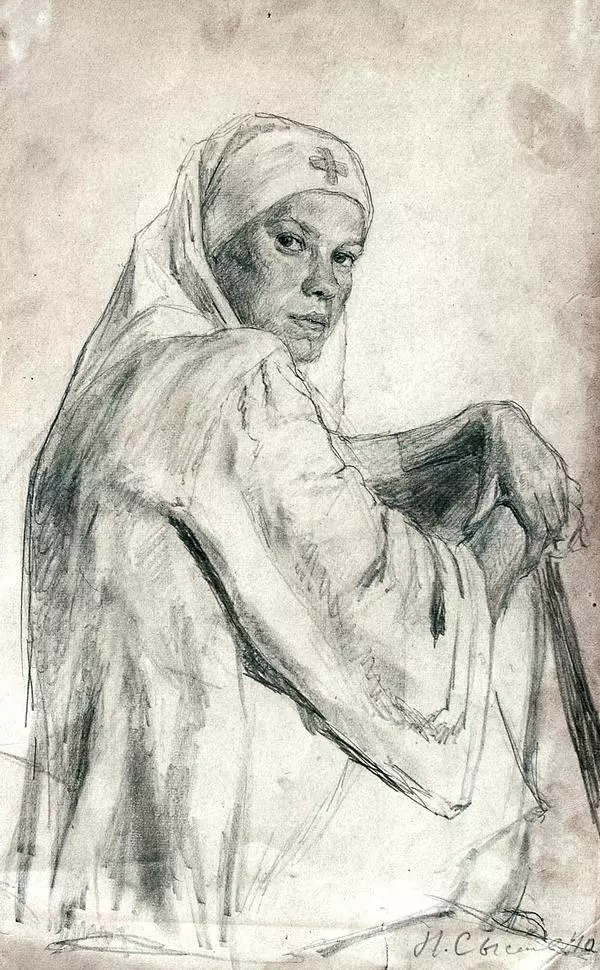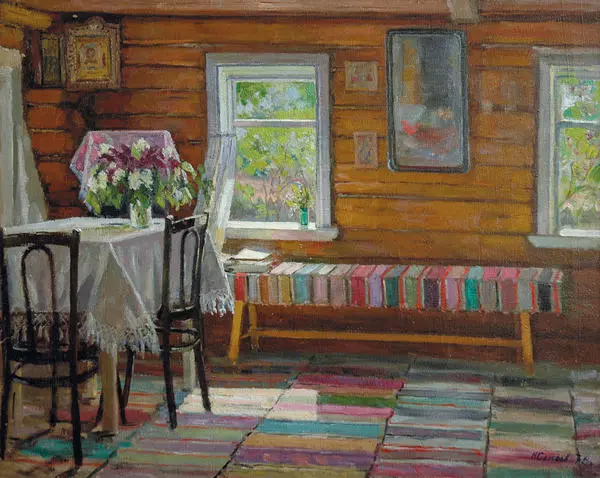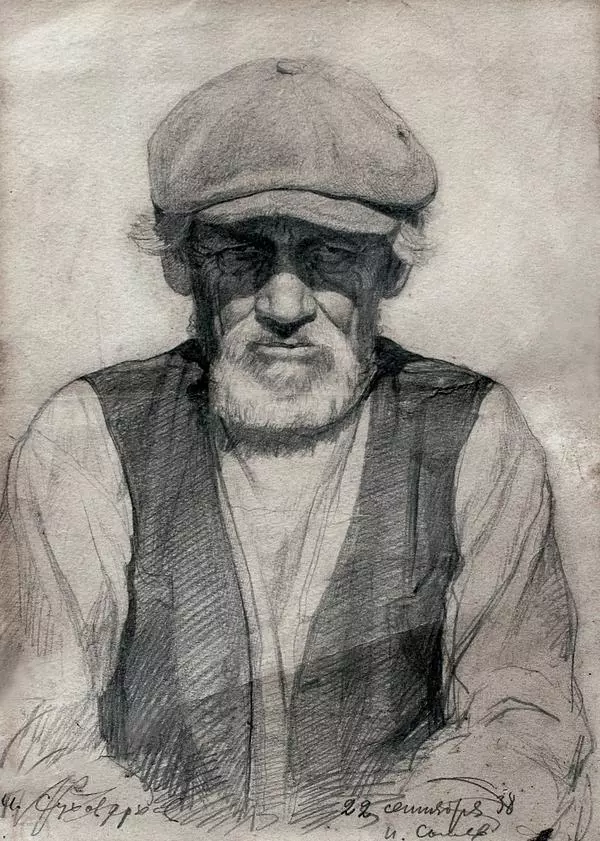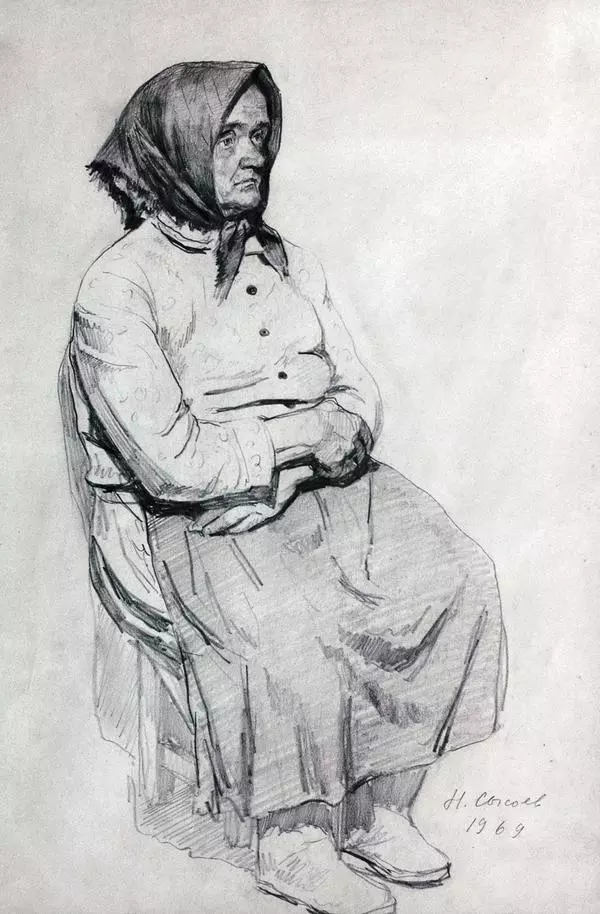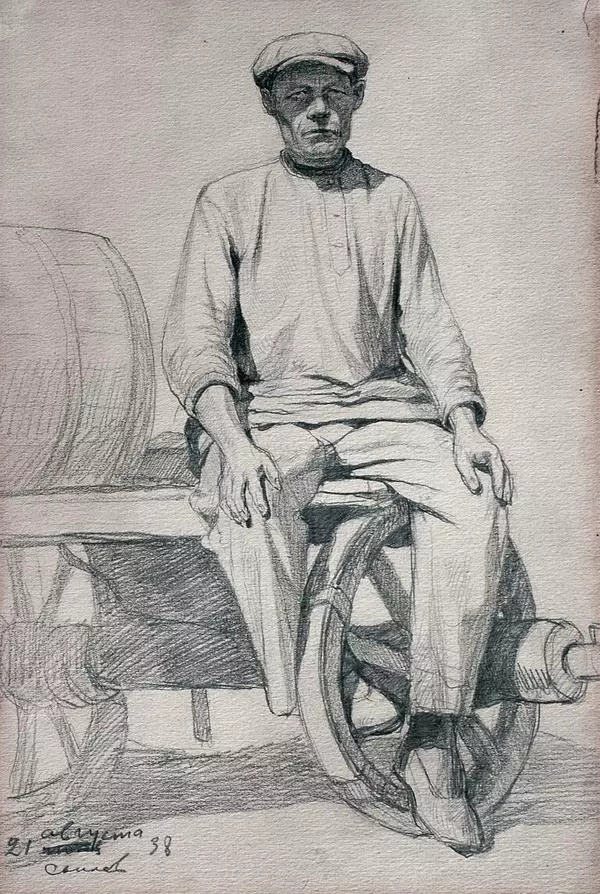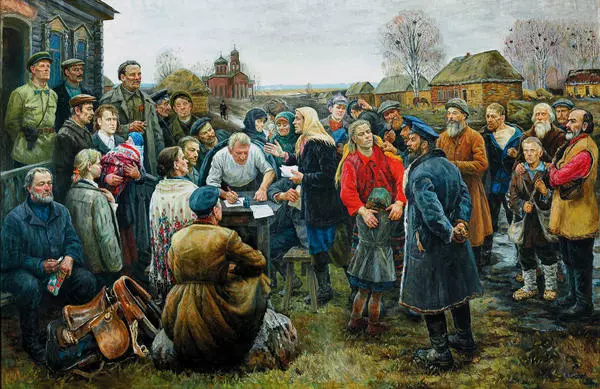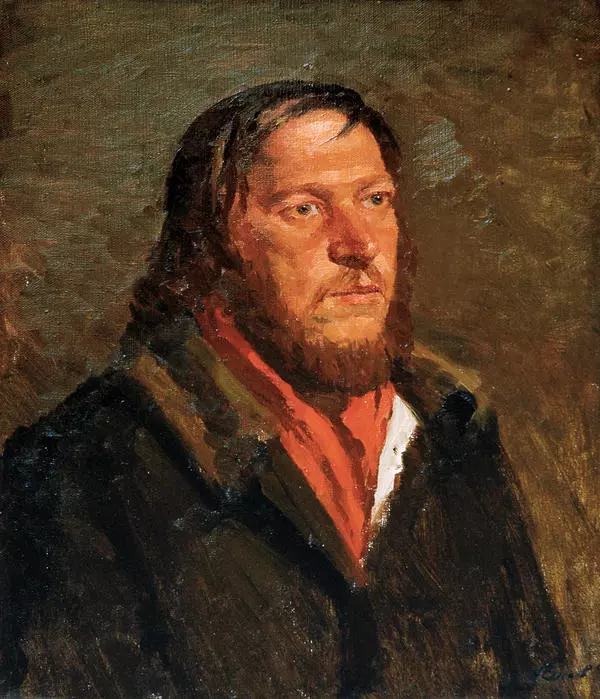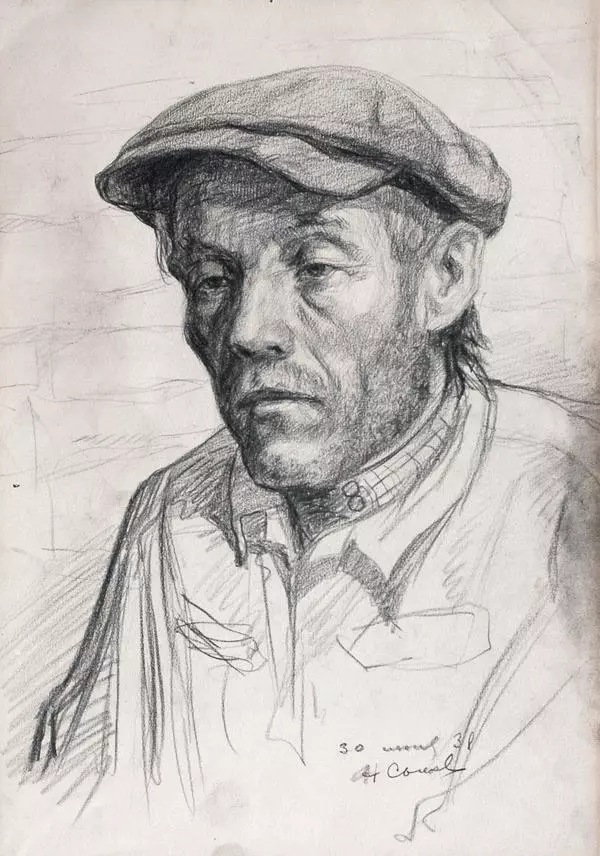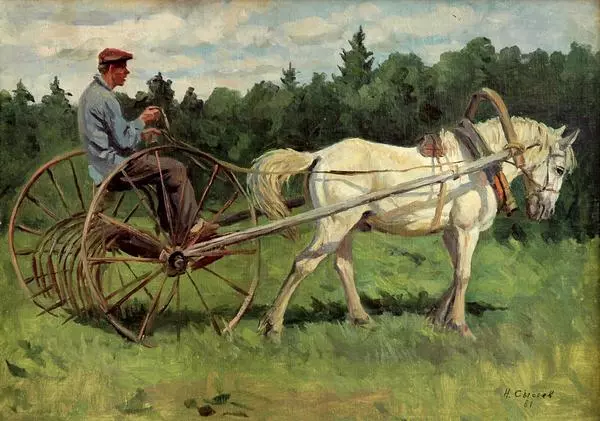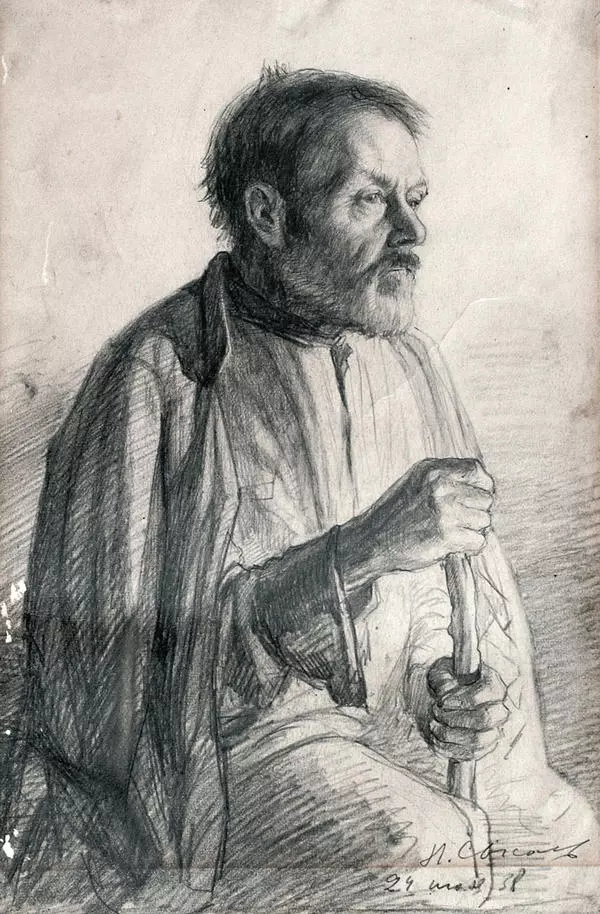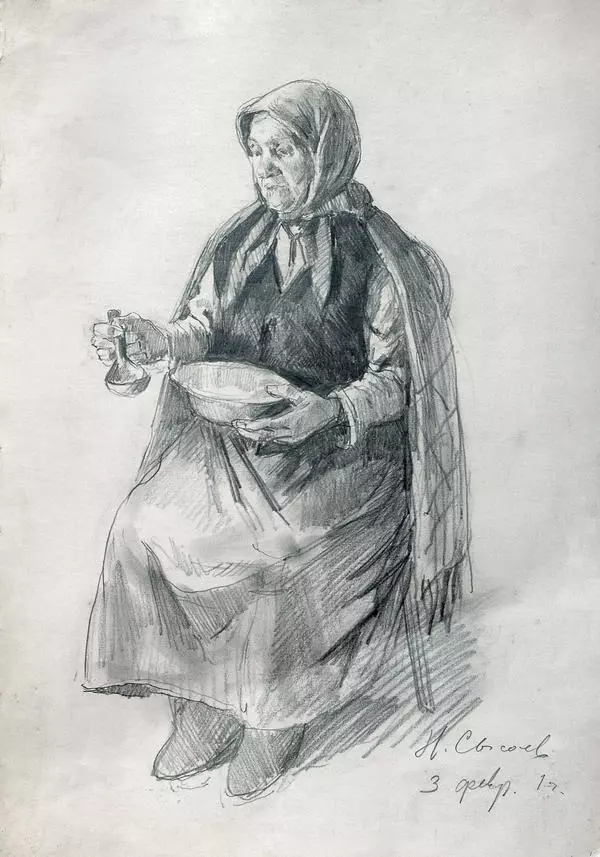Drawing lies at the foundation of art and is the key to realistically portraying life. Nikolai Sysoev began his career with drawing. He began to study drawing while still a child. To gain mastery of pencil and pen, he worked on his visual perception, studied the laws of perspective, and came to a practical understanding of how to correctly convey the dimension and tone of the object depicted. Sysoev continued to improve his drawing ability at the 1905 Moscow Art College (1934–1938). In his introductory article for the Nikolai Sysoev exhibition catalogue in 1980, Yury Kugach wrote the following about those years of study:
‘The teaching at the school was excellent, an atmosphere of creativity prevailed, and the students were eager to learn. Nikolai Sysoev was one of those enthusiastic students who studied literally from morning to night. He stood out for his giftedness, inquisitiveness, and love for the work. The countless sketches and drawings he made in addition to the compulsory programme greatly helped him in his studies.’
A school group of 10–12 students started getting together after class and, having refreshed themselves with tea and a white roll, they would spend the evening drawing. This group included the artists: Yury Kugach, Nikolai Solomin, Viktor Kiselev, Victor Tsigal, Vladimir Vasin, Konstantin Aksenov, and Vasily Basov among others. Nikolai Sysoev was one of them too. They posed for each other, painted from plaster models, and sometimes they managed to persuade sitters to pose for them and pitched in to pay. Strenuous daily work had a positive effect on academic performance: Sysoev always received the highest marks for special subjects. Almost all of his work was added to the school’s methodological archive.
Sysoev made the drawing “Little girl from the village of Slanskoe” after graduating from college in 1938. Drawing often serves as a preparation for paintings. In spite of this, however, Sysoev’s work looks focussed and complete. Confident line work, precise academic shading that conveys facial dimension, with the clothes and hands of the girl done more freely. The artist’s hard work bore fruit.
After studying at the Moscow State Academy Art Institute (now named after V.I. Surikov), the artist continued to improve his skills. At that time, the rector at the institute was the artist, restorer, and art critic Igor Grabar. He educated students in the spirit of consistent realism, and this required drawing – the basis for constructing figures in a painting – to be impeccable and to convey the model as accurately as possible.
All of this influenced Sysoev’s work, making him a convincing painter and a confident drawer.
‘The teaching at the school was excellent, an atmosphere of creativity prevailed, and the students were eager to learn. Nikolai Sysoev was one of those enthusiastic students who studied literally from morning to night. He stood out for his giftedness, inquisitiveness, and love for the work. The countless sketches and drawings he made in addition to the compulsory programme greatly helped him in his studies.’
A school group of 10–12 students started getting together after class and, having refreshed themselves with tea and a white roll, they would spend the evening drawing. This group included the artists: Yury Kugach, Nikolai Solomin, Viktor Kiselev, Victor Tsigal, Vladimir Vasin, Konstantin Aksenov, and Vasily Basov among others. Nikolai Sysoev was one of them too. They posed for each other, painted from plaster models, and sometimes they managed to persuade sitters to pose for them and pitched in to pay. Strenuous daily work had a positive effect on academic performance: Sysoev always received the highest marks for special subjects. Almost all of his work was added to the school’s methodological archive.
Sysoev made the drawing “Little girl from the village of Slanskoe” after graduating from college in 1938. Drawing often serves as a preparation for paintings. In spite of this, however, Sysoev’s work looks focussed and complete. Confident line work, precise academic shading that conveys facial dimension, with the clothes and hands of the girl done more freely. The artist’s hard work bore fruit.
After studying at the Moscow State Academy Art Institute (now named after V.I. Surikov), the artist continued to improve his skills. At that time, the rector at the institute was the artist, restorer, and art critic Igor Grabar. He educated students in the spirit of consistent realism, and this required drawing – the basis for constructing figures in a painting – to be impeccable and to convey the model as accurately as possible.
All of this influenced Sysoev’s work, making him a convincing painter and a confident drawer.




